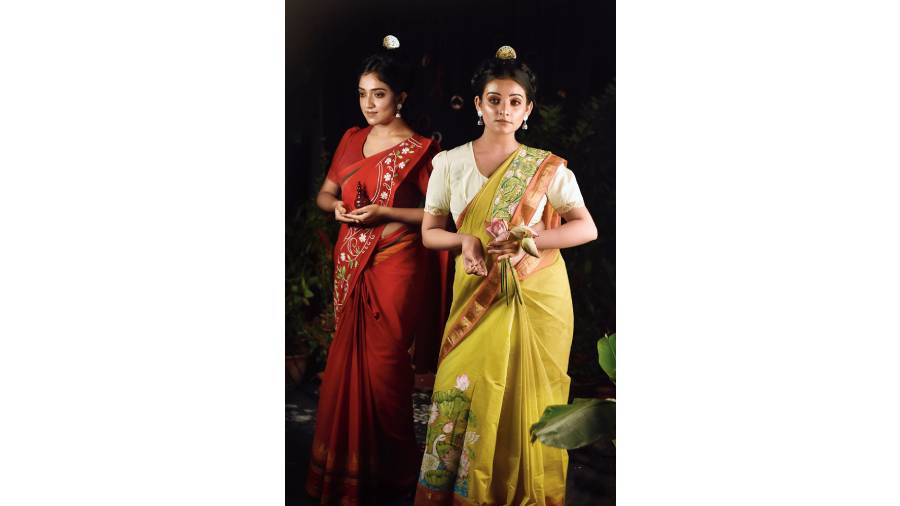Pujas may have come and gone, but we are already counting days for Ma Durga’s next homecoming. So eternal is the feeling. Much like home-grown apparel brand Agnik Kolkata’s festive collection comprising apparels for men and women and accessories for women. Titled Aranya Mangal — ‘the tale of the sacred grove’ — the contemporary collection is a mix of classic artforms of Bengal such as terracotta, Dutch Bengal paintings, Pala art, imagined in contemporary styles, with kantha and zardozi embroideries. Fashion designer Agnik Ghosh let us in on the collection in a freewheeling chat.
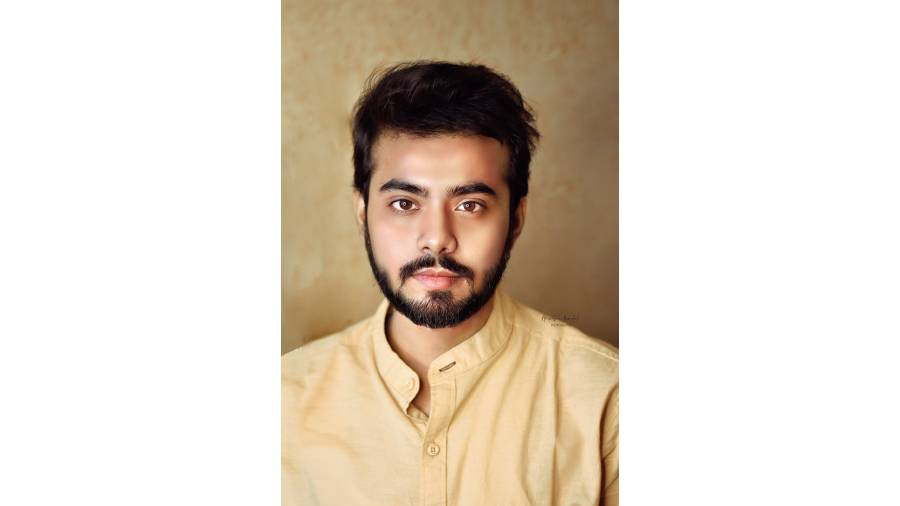
Fashion designer Agnik Ghosh
Pujas may have come and gone, but we are already counting days for Ma Durga’s next homecoming. So eternal is the feeling. Much like home-grown apparel brand Agnik Kolkata’s festive collection comprising apparels for men and women and accessories for women. Titled Aranya Mangal — ‘the tale of the sacred grove’ — the contemporary collection is a mix of classic artforms of Bengal such as terracotta, Dutch Bengal paintings, Pala art, imagined in contemporary styles, with kantha and zardozi embroideries. Fashion designer Agnik Ghosh let us in on the collection in a freewheeling chat.
What is the tale told through the Aranya Mangal collection?
This collection is inspired by Ashta Matrikas. Matrikas are female apparitions of various male Gods. In different Puranas, which include the Markandeya Purana and the Matsya Purana, Devi while fighting Mahishasura, is tired and needs extra men and women, and an army to help her out. So, through her power, she creates the Ashta Matrikas, which are again attributed to male Gods. They get created during the Mahishasur killing and help Durga kill Mahishasur.
Drawing from there, I thought how about we create clothes from there because this is something we’ve not explored much. This was my take on maybe creating forms of Devi on the accessories and apparel to show that she comes in various forms. I had to study a lot before doing the collection you know, to keep the representations intact.
I have drawn inspiration from Hindu religious texts, Matri Purana, Annada Mangal and Chandimangal, and Mangal Kavyas of the 16th century to arrive at the name Aranya Mangal.
Can it be said that the collection harks back to worshipping nature?
Yes, absolutely, because a lot of these Matrikas, the way they look, their imagery, their mount, the way they dress, a lot of them are nature-oriented. The motifs are specifically inspired by where the Devi sits. She sits on a white lotus say, or Brahmani’s mount is a swan, so we created motifs with swan and lotus. When we are talking about Chandika, Chamunda, we created an icon of Devi with molten gold skin and we made a necklace, a lion neckpiece and we call it Chandika. So, there are natural elements because these Devis talk about nature as a whole. In every clothing, you would find one or two natural elements.
Take us through the accessories in the collection...
There were a lot of Devis which we couldn’t print or embroider on the garments, so we created accessories. One of the major things we did this time was replicating the old, terracotta art of Bengal. We have this jewellery which are inspired by the Terracotta clay temples of Bishnupur. There’s a very beautiful piece that is the Dakshina Kali, which is just like it was happening in the 13th and 14th centuries in the Bangla style.
For this project, we have collaborated with four-five fine artists and sculptors who have created the jewellery for us. There is also jewellery inspired by South Indian relics that are seen on the walls at Hampi and Madurai, so there are these bold motifs and lion motifs that are inspired by South Indian forms of art. We also have the typical old-style Durga protimas of Bangla orientation.
What fabrics are used in the collection?
We are using fabrics that are feasible. A lot of them have come from Chettinad. They are actually 12-yard saris that have been cut and made into various ensembles. Then there is cotton Phulia, which is a Bengal weave. The saris are majorly Chettinad cotton and they have been patched in Phulia weaves. We reached out to the South because they have a lot of beautiful jacquard-woven borders so we thought why not use them.
And the colour palette?
It’s very evident because we are talking about the forest and we’re talking about eight Matrikas that are associated with eight different colours. Someone is red, someone is dark like a dark cloudy sky, someone is yellow or a molten gold tone, or like a clear blue sky, so there are different tones happening. We also used jewel tones, pastel tones, basic solid colours like off-white and black and red so there were a number of colours that are also associated with the flora, fauna, things happening inside a forest. We have used purples, violets, emerald greens, and really bright yellows and also pastel shades like toned-down yellow ochre, pastel Lakshmi pink, pastel banana leaf-ish shade, basic shades like grey, black, red.
And the embroidery...
Yes, so we did a lot of kantha. And jewellery is done with zardozi,. There’s a purple blouse, the face of Maheshwari is done on a wheatish skin tone.
How would you categorise the Aranya Mangal collection and was it a conscious decision to break away from the popular Bengali elements for this collection?
I think it would be best to term it as ‘contemporary’. What I did was we didn’t do any tailored garments for women, we did majorly sari and blouses. But for the men, there are a few more pieces where we did like overlapped jackets which is not very traditional. In creating the men’s silhouette, I have mostly used contemporary styles.
Coming to the second part of your question, yes it was. The festive collection is something that you want everyone to wear so I had to choose silhouettes that are recognisable by those who are not Bengalis too. So if you are looking at the collection, I moved away a little bit from the quintessential Bengali elements... maybe for someone who is not celebrating any festival at all but he/she just likes it so they buy it. I needed it to be open to your imagination.
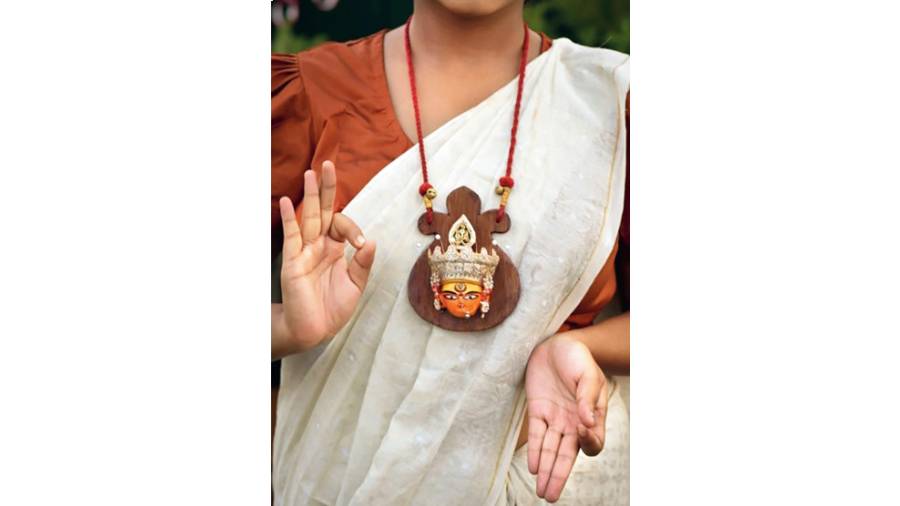
Neckpiece with the face of Devi Durga

This white sari with red borders evokes the image of Vana-Durga as interpreted by Agnik
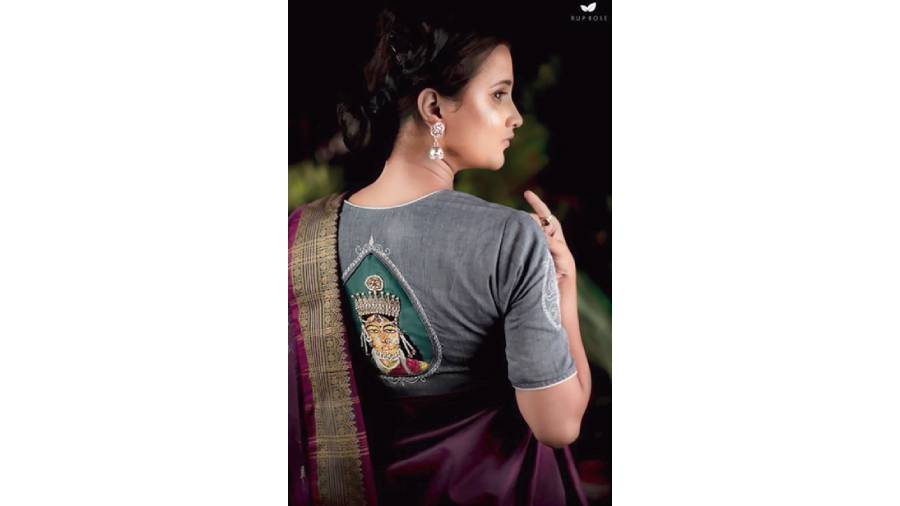
Balancing the offbeat colour combination of violet and grey, this sari has various embroidery techniques. The blouse is beautiful
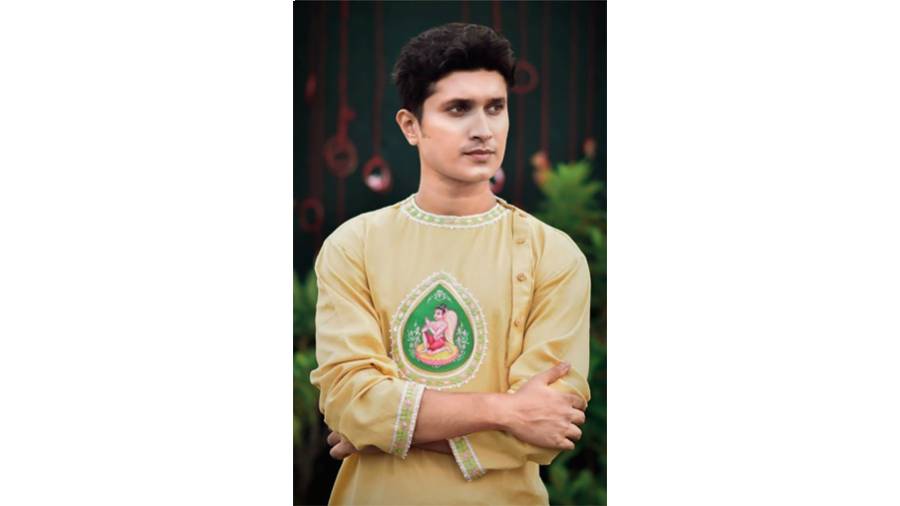
Kantha embroidered kurta with hand-painted details resembling Lord Vishnu’s mount ‘The Garuda’. “We wanted to make this piece after this Matrika known as Vaishnavi, so we thought of putting Garuda. The medallion on the light-yellow ochre kurta has hand-painted Garuda sitting with folded hands in the centre of padma bon. Garuda resembles Pala art and the frame is embroidered with kantha,” says Agnik.
Pictures: Anirban Mondal and Rup Bose
